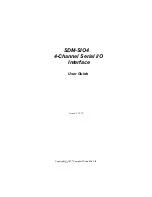
Page 11/32
© Geobrugg Gruppe, CH-8590 Romanshorn, Switzerland
Maintenance manual RXE, GBE / 09
If there are compressed, heavily distorted, superficially or completely torn rings, these areas should be
repaired.
4.4.4
Wire mesh
If there are compressed, heavily distorted or torn mesh loops, these areas should be repaired.
4.5
Ropes as per the rope assembling drawings
4.5.1
Corrosion
Replacement of the rope, or a section thereof, is necessary if more than approx. 10% of the cross-section is af-
fected.
4.5.2
Mechanical damage
Mechanical damage is indicated by sharp kinks and squashed or torn outer wires. Within a few years, the rope
becomes brittle and loses the required load-bearing capacity. In cases of doubt, a section of the rope must be cut
out in order to test the breaking strength of the rope. In the event of a poor test result, the entire rope must be
replaced.
If one or more strands are torn, the rope, or this section thereof, must be replaced.
4.6
Posts
The posts hold the upper support ropes at the corresponding height and thus determine the usable height of the
barrier. Slightly bent posts up to an angle of 15° do not need to be replaced.
4.7
Hinge bolt between post and base plate
In the event of impacts into the post, the hinge bolt between the post and the base plate may be bent or broken
(predetermined breaking point, in order to avoid damage to the base plates and anchors). Bent or broken hinge
bolts must be replaced.
4.8
Base plate
Plastic deformations to the base plate do not impair the functioning of the base plate significantly. Attention should
therefore be focused on the weld seams. If weld seams are torn, the base plate must be replaced.
4.9
Rod anchor of the base plate or post foot
If a rod anchor (GEWI anchor) is significantly bent (>15°), if cracks are visible, or if the anchor is pulled out of the
ground by more than 3cm, it must be replaced, since under certain circumstances its load-bearing capacity may no
longer be sufficient.
4.10
Spiral rope anchor
Spiral rope anchors need only be replaced if there is serious damage to wires. If a steel pipe of an anchor head is
damaged, this does not reduce the loading limit. However, this may lead to a shorter lifespan, because of the
reduced corrosion protection. If the anchor is pulled out of the ground by more than 3 cm, it must be replaced, since
under certain circumstances its load-bearing capacity may no longer be sufficient.












































